A (less than before, thanks hacf-fr) dirty but simple Python script to automagically create a guest password on an Iliadbox/Freebox router:
- depends on Python3 and the modules inside the
requirements.txtfile - automatically registers an app token through the router's API
- implement the functionality through freebox-api
- uses HTTPS for API requests, works for both French and Italian versions
- prints the guest AP credentials as a QR-code inside the terminal
By default, the generated guest key will expire after one day; also, the description and the key itself are randomly generated.
You can set up a Python virtualenv and use this script inside it through the following commands (in Bash):
python3 -m venv .venv
source .venv/bin/activate
pip install -U pip
pip install -r requirements.txt
cp freebox_certificates.pem $(find .venv -name 'freebox_certificates.pem')
python main.pyYou can also just run the init_env.sh script with Bash: it will delete the pre-existing .venv folder and download again the dependencies and install the certificate.
IMPORTANT: If you are using an Italian Iliadbox, you MUST copy the provided PEM cerftificate file inside the virtualenv packages directory, as shown above. If you are using a French Freebox, you must change the ROUTER_NAME variable inside the main.py file (de-comment the right one, delete the other).
At the moment the script will accept the following arguments from the CLI:
-help: print an help message with these arguments' syntax, then exit the program-noqr: will not print the QR-code to the terminal (default: will print QR if not passed)-apname <custom_name>: set the name of the guest password to custom_name (default: randomly generated name_adjective string)-duration <seconds>: set the number of seconds (as integer) before expiring the guest key (default: one day)-numusers <number>: set the number of concurrent users (as integer) allowed to share the same guest key (default: 1)
NOTE: This setting should be ON by default, however it is a prerequisite to make the API calling work, therefore I am providing instructions on how to find it
Follow the pictures to find the app pairing setting, and enable it if is not checked:
-
Click on the bottom left menu, hover the mouse cursor over the "Settings" item, then click on "Iliadbox parameters"
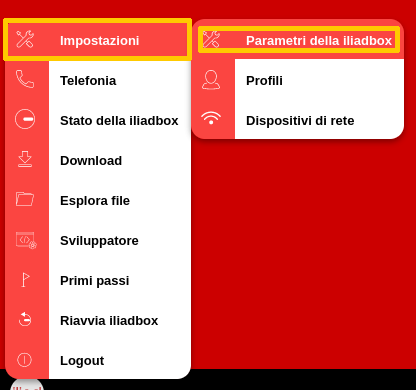
-
In case you see the simplified view: click on the "Access management" item
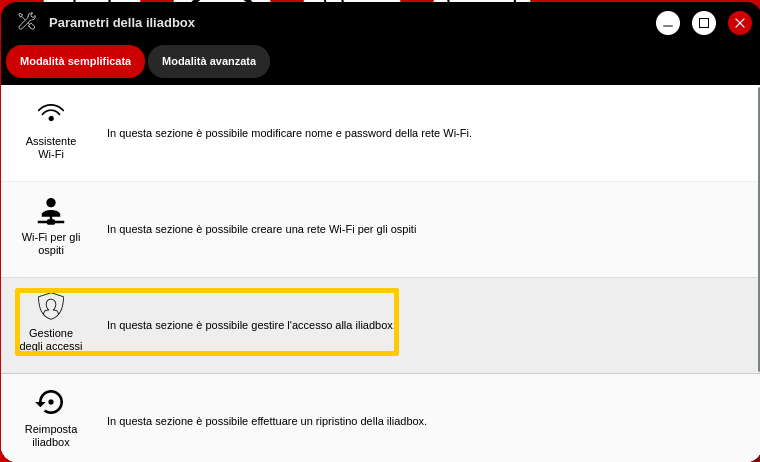
-
In case you see the advanced view, scroll down and double-click on the "Access management" button
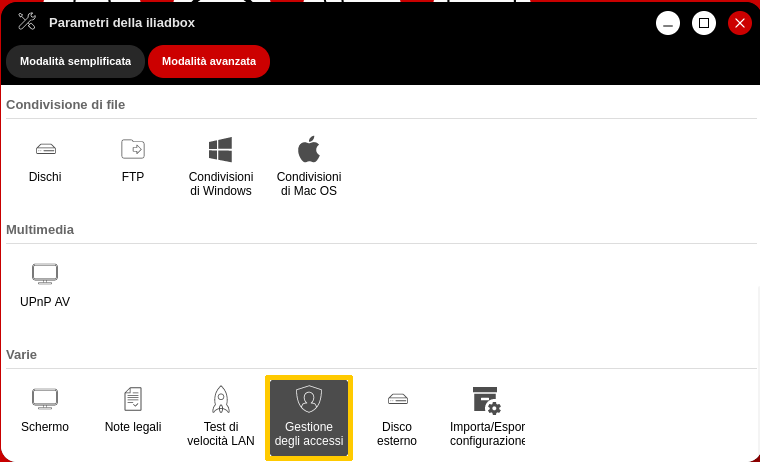
-
From the new window that will pop up, check the box at the right of the option "Allow new pairing requests"
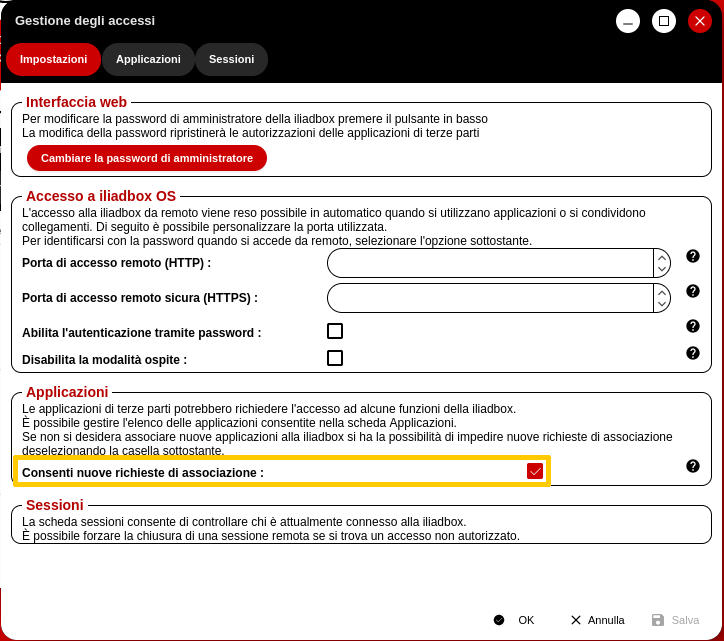
NOTE: at the moment the "developper™ API" does not expose the /authorization endpoint, which you interact with through the web interface. Therefore, the following step is mandatory when running the script for the first time.
-
Follow the steps from the previous section and open the "Access management" window
-
From there, click the "Applications" tab, then locate the "Uai-Fai" application and click the pencil icon at the right of its row
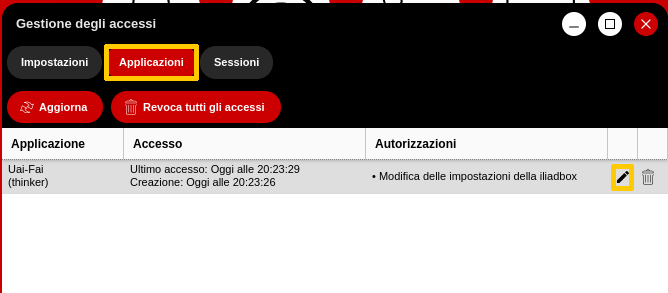
-
Select only the access right called "Edit Iliadbox/Freebox settings"
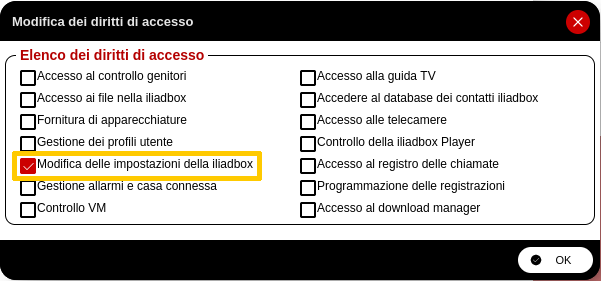
To generate a new app token, delete the file uaifai_authz.json that the script will create after it's first run.